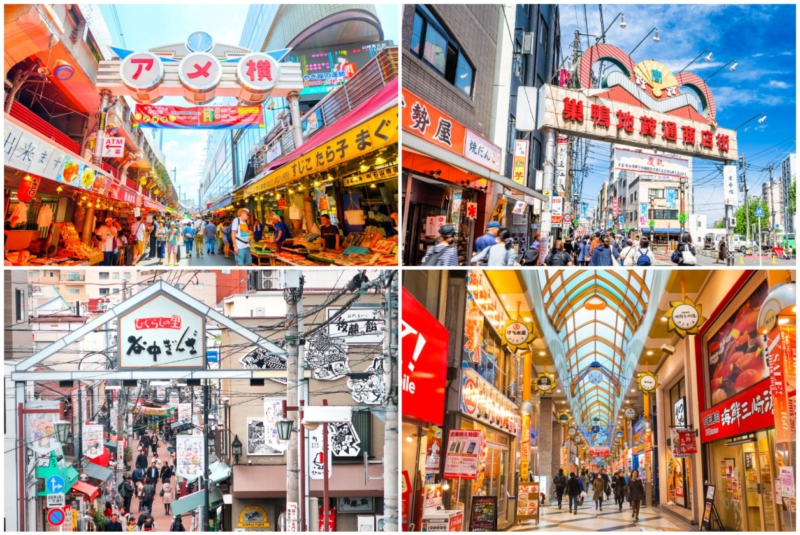Have you ever visited a shotengai (shopping street) in Japan? Shotengai are a great place to shop and eat like a local while also getting a glimpse of the everyday lives of the people in the community. Here are 10 of the best shotengai in Tokyo that you must visit in 2020!
What Exactly Is a Shotengai?

Shotengai literally means “street of stores,” but the term actually has a much more cultural and communal significance that is very deeply rooted in the Japanese way of life. Said to date back to the late 1500s, shotengai began as a spontaneous gathering of retailers who later formed their own associations to regulate operations. The term now refers to the shopping district usually centered around the train station. The concentration of shops commonly consists of local grocers and other food vendors, eateries, pharmacies, hair salons, pachinko, and a whole variety of mom-and-pop stores. Shotengai are usually distinctly separated from the residential areas in the vicinity, and exude a lively and vibrant atmosphere that blends the new and old aspects of Japanese cultures.
Shotengai is also a term used to refer to the retailers’ association or union to which the shops belong. The promotion association of the shotengai will organize and host seasonal events to support the local community at times of festivals and other special occasions throughout the year. In other words, the shotengai not only serves to provide the people of the community with their everyday needs, but it also helps to keep the local traditions alive.
Below are 10 of the most prominent shotengai in the Tokyo area that you must visit if you’re looking to immerse in the local atmosphere and its food culture. Let’s take a look!
1. Ameya Yokocho (Ueno)

Ameya Yokocho, more commonly called Ameyoko, is located just outside Ueno Station, and is always bustling with vendors zealously advertising their products to the visitors who are also bartering for a bargain. The shopkeepers are great at making business deals, and if you’re lucky, you may even get some freebies and discounts. The whole shopping experience is as entertaining as the amazing goods and produce being sold at the stalls, which are crammed along the main streets as well as in every nook and cranny in the narrowest of alleys.
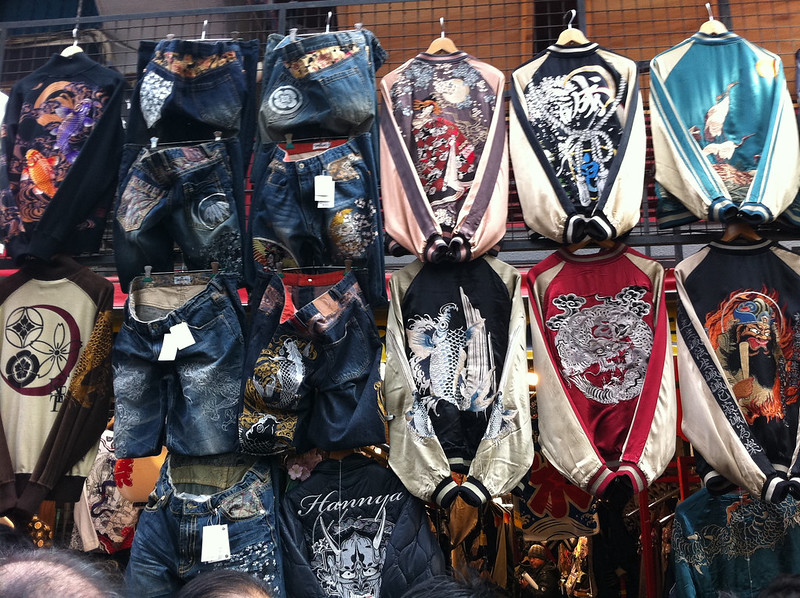
Ameyoko is one of the few remaining shotengai that evolved from the post-World War II black markets. This one, in particular, began as a market for selling American products, which is why you’ll notice that a lot of the stores carry military-inspired garments and replicas to this day.
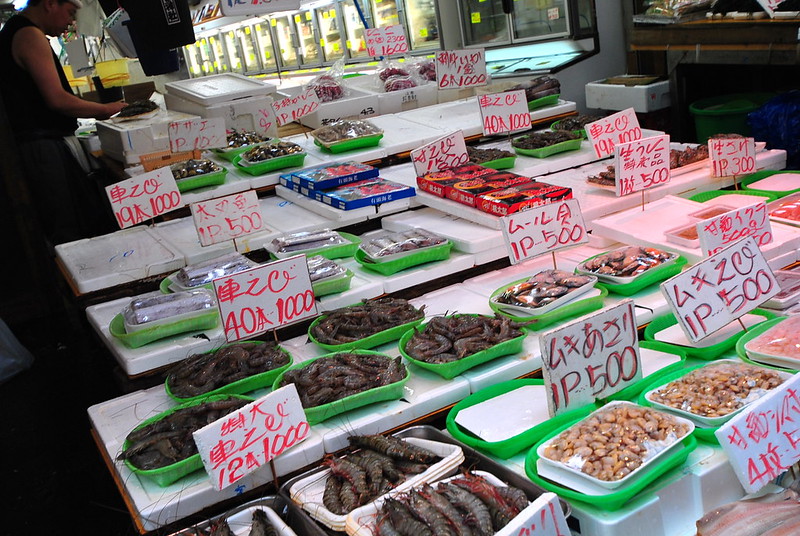
You’ll also encounter fresh produce and a wide variety of freshly caught seafood among other foods, and it’s not unusual for the vendors to offer small pieces for you to sample. What an excellent way to get an introduction to Japanese food culture!
Ameyoko is a great place for residents to buy affordable souvenirs, even more so if you buy in bulk, but there are also retailers that specialize in novelties and rarities if you’re interested in finding something out of the ordinary.
Name
Ameya Yokocho
Address
6-10-7, Ueno, Taito-ku, Tokyo
東京都台東区上野6-10-7
Access
Around a 3-minute walk from Ueno Station
Website (Japanese)
http://www.ameyoko.net
2. Yanaka Ginza Shotengai (Nippori)

Yanaka Ginza Shotengai is located just a few minutes away on foot from Nippori Station. As soon as you exit the station, you’ll be surrounded the traditional atmosphere of a temple district. Continuing further along the charming street, you’ll come across a scenic spot known to the locals as “Yuyake Dandan” (sunset stairway). From the top of a series of steps overlooking the small shops lining the shotengai, you’ll be able to see the sun setting in the background in the late afternoon. The panorama of the neighborhood drenched in the warm orange hue is a sight to see.
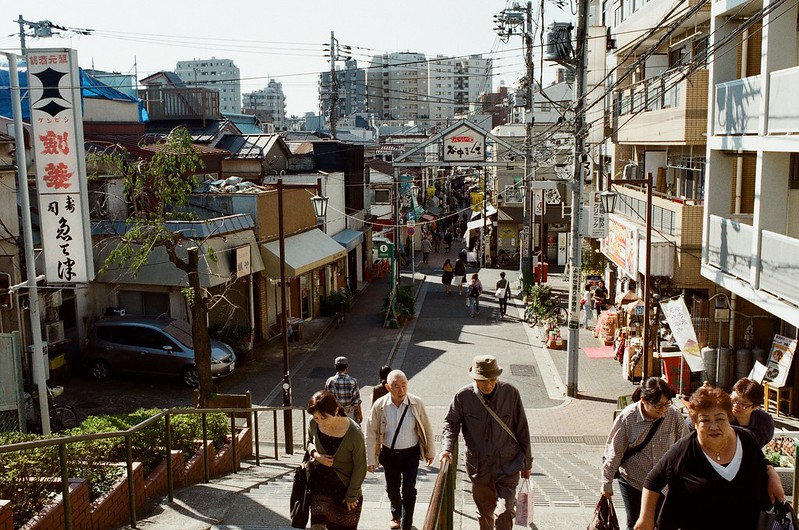
Over the length of 170 meters, the shotengai is lined with about 60 stores of all trades, most of which are family-operated. The shopping street is fairly low-key compared to the more touristy locations, and it still retains the old nostalgic appearance of the Showa era (1926-1989). The overall mood of the shotengai is peaceful and friendly, and its size is perfect for a casual stroll to enjoy the old Japanese markets while stopping for some tasty food and drinks along the way.
Name
Yanaka Ginza Shotengai
Address
3-13-1, Yanaka, Taito-ku, Tokyo
東京都台東区谷中3-13-1
Access
Around a 5-minute walk from both Nippori and Sendagi Stations
Website (Japanese)
http://www.yanakaginza.com
3. Sunamachi Ginza Shopping Street (Nishi-ojima)
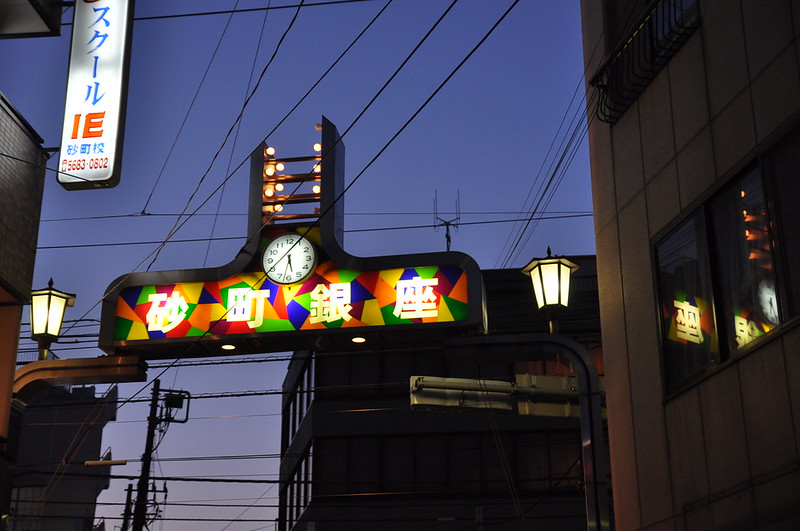
Sunamachi Ginza Shotengai is a bit of a walk from the nearest station, but the interesting shops and delicious street food you can discover there make it well-worth the trip! The present-day layout of Sunamachi Ginza began to take shape around 1963, and it consists of some 180 retailers lining the lane that extends roughly 670 meters. It still boasts the local old town, or shitamachi, atmosphere created by the family-run businesses selling all kinds of food, household goods, and souvenir-worthy items from under the brightly-colored awnings and shop signs.
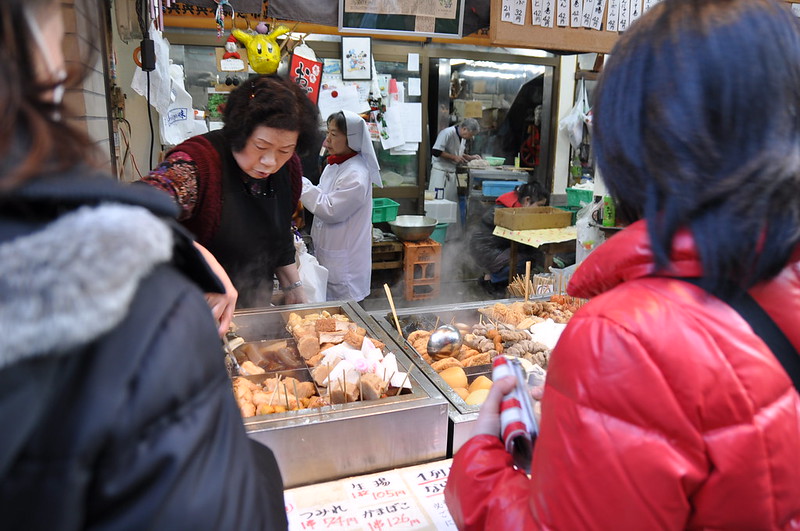
Most of what is being sold in Sunamachi Ginza Shotengai is very reasonably priced to begin with. However, on the 10th of every month is a huge bargain called the Baka-ne Ichi, which literally translates to “stupidly-priced market”, and it pretty much explains the main focus of the event. It boasts a great turnout of visitors that come from near and far. Another popular event is the annual Tanabata Matsuri (Star Festival) which takes place in early August.
Name
Sunamachi Ginza Shotengai
Address
4-18-14, Kitasuna, Taito-ku, Tokyo
東京都江東区北砂4-18-14
Access
Take a bus from Kinshincho, Toyocho, Nishi-ojima, or Kameido Stations
Website (Japanese)
https://sunamachi-ginza.com/
4. Sugamo Jizo-Dori Shotengai (Sugamo)

The shotengai in Sugamo is lovingly described as “Harajuku for grannies” because along the main Sugamo Jizo-Dori shopping street are over 180 shops that cater mostly to the older demographic. The historic town of Sugamo flourished in the Edo period (1603-1867) as a tateba (posting station) where they offered lodging for the travelers that passed along the former Nakasendo Highway. It is also famous for the two jizo (guardian deity of children), the Togenuki Jizo of Koganji and Roku-jizoson, one of six jizo placed around Tokyo in 1700s, which were erected to offer spiritual support and relief to those that visit. Sugamo’s rich history seems to have contributed to creating the friendly and welcoming atmosphere of the town and its people.
When in Sugamo, do stop by Mizuno, a traditional Japanese confectioner most famous for inventing the shio daifuku (lightly salted mochi with sweet red bean paste filling). The chewy mochi with the red bean paste is an excellent combination, and the daifuku is a popular treat and a great pick-me-up for kids, adults, and grannies alike.
Make sure to say hi to Sugamon, the mascot of the shotengai, if you spot him in the streets! Rumor has it that if you touch his tail, you’ll have luck in your romantic relationships.
Name
Sugamo Jizo-Dori Shotengai
Address
4,22-8, Sugamo, Toshima-ku, Tokyo
東京都豊島区巣鴨4-22-8
Access
Around a 2-minute walk from both Sugamo and Koshinzuka Stations
Website (Japanese)
https://www.sugamo.or.jp Website (English)
https://sugamo.or.jp/en/
5. Nakano Sun Mall Shotengai (Nakano)

Nakano Sun Mall Shotengai is a covered pedestrian arcade that runs 224m, straight down from the North Exit of Nakano Station to where it ends at Nakano Broadway shopping center, another famous landmark and a center for Japanese pop and otaku (geek) culture. What’s interesting about this arcade is that it plays different types of music to set the mood according to the time of day. It also keeps the visitors and everyday commuters entertained with their seasonal adornments and LED illuminations that change throughout the year.

Along this well-lit, covered street are 110 stores of independent and chain enterprises to serve the young and old of the very populated town of Nakano. There are even more stores and hole-in-the-wall spots along the side streets and alleys that make up a series of mini shotengai, so it’s like a labyrinth of shops waiting to be explored!
Pictured is a scene from the Hikawa Shrine Festival, which takes place every September. Mikoshi (portable shrine) are carried along the Sun Mall and the entire shotengai is alight with festivity and celebration.
Name
Nakano Sun Mall Shotengai
Address
5-67-1, Nakano, Nakano-ku, Tokyo
中野区中野5-67-1
Access
Around a 1 minute walk from Nakano Station
Website (Japanese)
http://www.heart-beat-nakano.com/street/48.html
6. Togoshi-ginza Shopping Street (Togoshi)

The shopping district of Togoshi-ginza is not only one of the largest in Tokyo, but in all of the Kanto region. Spanning a total length of 1.3km and comprised of a collaboration of 3 separate shopping promotion associations, the shotengai is a melting pot of approximately 400 shops that deal in practically everything under the sun to meet your everyday needs.
You may notice by the mouth-watering smell wafting from the various parts of the shotengai that Togoshi-ginza is fried-food heaven! Take your pick from a variety of croquettes or karaage (deep-fried chicken), and other fried delicacies – or just try them all! You can buy single servings and eat them on the go as you scope out the streets for your next destination.
Meet Togoshi Ginjiro, aka Gin-chan, the stray cat mascot of Togoshi-ginza. He loves croquettes and is a seasoned shopper. He makes public appearances at events and in the media to promote the charms of Togoshi-ginza. It is said that touching the star-shaped mark on his forehead or his paw will bring you happiness.
Name
Togoshi-ginza Shopping Street
Address
3-1-18, Togoshi, Shinagawa-ku, Tokyo
東京都品川区戸越3-1-18
Access
Around a 2-minute walk from Togoshi Station
Around a 3-minute walk from Togoshi Ginza Station
Website (Japanese)
http://www.togoshiginza.jp
Website (English)
http://www.togoshiginza.jp/en/
7. Happy Road Ohyama Shotengai (Oyama)

Happy Road Ohyama became the first shopping arcade in Itabashi Ward (Itabashi-ku) in 1978, and has since aimed at creating a safe and community-friendly environment to cater to customers of all ages.
One of its key features is the Toretate Mura, a shop that offers freshly picked produce and regional specialties directly procured from the 15 towns and villages with which they have a tie-up. They promote these places at local events, and aims to form a system that benefits the shotengai, the producers, and Itabashi Ward.
Name
Happy Road Ohyama Shotengai
Address
49-1, Oyama-cho, Itabashi-ku, Tokyo
東京都板橋区大山町49-1
Access
Around a 6-minute walk from Oyama Station
Website (Japanese)
http://haro.or.jp
8. Musashi Koyama Shotengai Palm (Musashi-koyama)

The people of Palm sure love to party! This 800m-long shopping arcade located just outside of Musashi-koyama Station is famous for hosting numerous festivals and events throughout the year, such as the Ryuhyo Matsuri (Glacier Festival), Noryo-ichi (Summer Market), Samba Carnival, Shinshun Wadaiko (New Year Japanese Drums Performance), and the Ryoujya-sai (festival of 2 shrines held together) to name a few.
Pictured is the mikoshi parade of the Ryoujya-sai, a festival that commemorates the two major local shrines, Sanya Hachiman Jinja and Koyama Hachiman Jinja. Palm even has its own mikoshi to join in on the festivities with the other 6 portable shrines of the procession.
Name
Musashi Koyama Shotengai Palm
Address
3-23-5, Koyama, Shinagawa-ku, Tokyo
東京都品川区小山3-23-5
Access
Around a 3-minute walk from Musashi-koyama Station
Website (Japanese)
http://www.musashikoyama-palm.com
9. Ju-jo Ginza (Jujo)

Ju-jo Ginza is conveniently located less than a minute away on foot from Jujo Station, which can be reached in as little as 10-minutes by train from Shinjuku. Once you’re on the shopping street, the covered arcade will allow you to enjoy your shopping even on gloomy and rainy days without having to worry about getting wet.
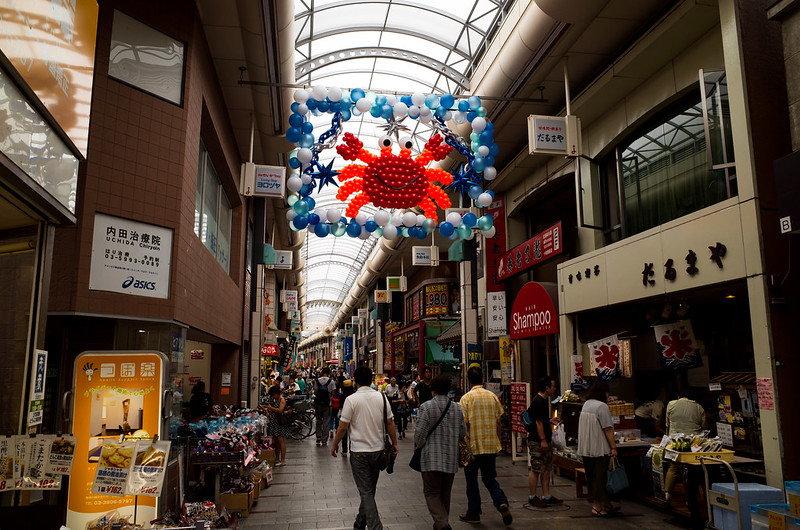
Ju-jo Ginza is ranked in Tokyo’s Top Three Ginza Shotengai alongside the aforementioned Togoshi Ginza and Sunamachi Ginza, and is the largest shopping arcade in the Kita Ward (Kita-ku) area, as it is made up of roughly 200 stores.
Enjoy the vibrant atmosphere and the warm local hospitality as you explore the selection of stores ranging from unique mom-and-pop stores to yummy delicatessen shops and everything in between. You’re sure to find a variety of food, daily essentials, clothing, and cute souvenirs that are easy on your wallet.
Name
Ju-jo Ginza
Address
1-4-8, Jujo Nakahara, Kita-ku, Tokyo
東京都北区十条仲原1-4-8
Access
Around a 1 minute walk from Jujo Station
Website (Japanese)
http://jujo-ginza.com
Website (English)
http://jujo-ginza.com/en/
10. Asagaya Pearl Center Shopping Street (Asagaya)
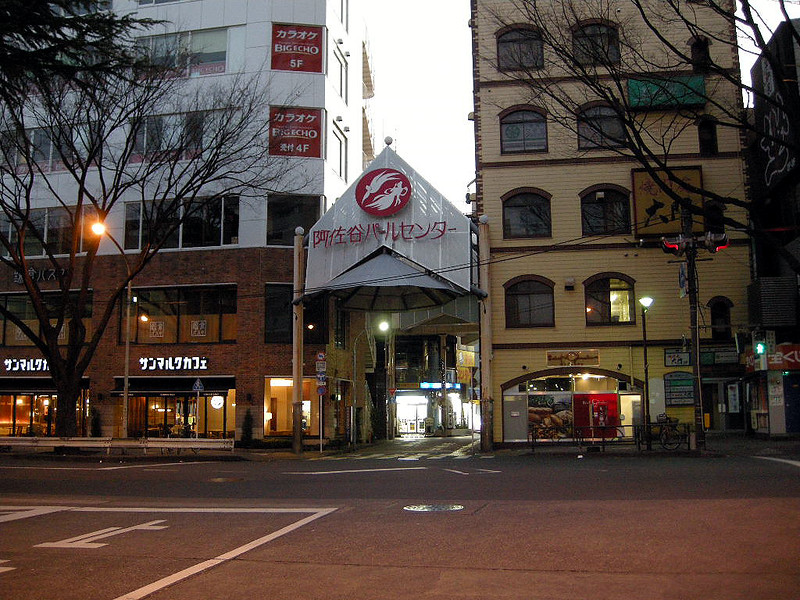
This shotengai of Asagaya has a long history dating back to the Taisho period (1912–1926), when merchants began to gather and form clusters of shops along the street after the Great Kanto Earthquake of 1923. The name, Pearl Center, was chosen among the many entries to a naming contest, and it represents the sense of connectedness to link the shotengai together – just like a chain of pearls – in order to prosper as a whole.

Pearl Center is known to hold several annual events such as Halloween and Jazz events, but the biggest and the most important one is the Tanabata Matsuri, which has been celebrated since 1954. In keeping with the tradition, every year in August, the entire roofed pedestrian street becomes adorned with rows and rows of vibrant decorations and large ornaments made of paper depicting popular TV and anime characters, cute animals, and celebrities.
Halloween has also become a very lively event at Pearl Center. The grand prize of the costume contest is a gift card worth 50,000 yen (as of 2017)! No wonder there are so many participants, with some taking cosplay to a whole new level.
Name
Asagaya Peal Center Shopping Street
Address
1-36-10, Asagaya Minami, Suginami-ku, Tokyo
東京都杉並区阿佐谷南1-36-10
Access
Around a 5-minute walk from Asagaya Station
Website (Japanese)
http://www.asagaya.or.jp
When it comes to shopping in Tokyo, it’s not always about the upscale and high-rise shopping complexes that sell the latest fashion and food trends. If you really want to experience the everyday life of the Japanese people, a good place to start is the local shotengai. Exploring the shopping street for new and exciting finds should be a fun adventure, and it’s usually a lot easier on your wallet, too! It might be a bit intimidating at first, but it always helps to respect the vendors and other shoppers as you’ll likely be rubbing shoulders (both literally and figuratively) with the locals.
If you want to give feedback on any of our articles, you have an idea that you’d really like to see come to life, or you just have a question on Japan, hit us up on our Facebook!
The information in this article is accurate at the time of publication.
